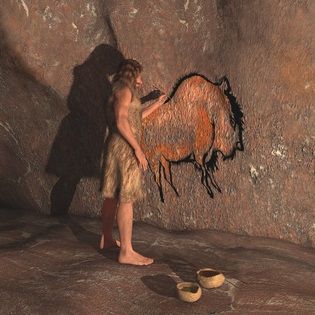Archeologists Reveal How Ancient Man Cared for His Teeth
According to a recent study published in the journal Science of Nature, a team of researchers were able to determine what some of our ancient ancestors ate, how they prepared their food, and even how they cared for their teeth by examining the calcified plaque found on human teeth.

As a dentist, you know that you can learn a lot about somebody from looking at their teeth. As it turns out, the same can be said of archeologists.
According to a recent study published in the journal Science of Nature, a team of researchers were able to determine what some of our ancient ancestors ate, how they prepared their food, and even how they cared for their teeth by examining the calcified plaque found on human teeth.
It turns out that cooking wasn’t a priority among the people who lived in what is now Sima del Elefante, Atapuerca, Spain about 1.2 million years ago. This portion of Spain is the source of some of the oldest human remains found in Europe, the study notes. Researchers determined by studying the plaque on teeth found in this area that starchy carbs were a primary energy source for ancient man in this region, including two grass species. Meat was also a prominent source of protein. The analysis of the calcified plaque revealed that all of this food was consumed raw.
“Evidence for plant exploitation in the earliest stages of hominin occupation in Europe is extremely limited,” the study notes. “The material emerging from dental calculus provides new insights into hitherto unobtainable evidence for use of plants as food, medicine and raw materials.”
Additionally, and perhaps most interestingly for dentists, researchers found pieces of non-edible wood stuck in grooves on the teeth, “suggesting oral hygiene activities,” the study says. These grooves are typical in species that pick their teeth using pieces of wood, the study notes. In other words, the researchers may have uncovered some of the earliest evidence of man’s toothpick use.
“Interproximal grooves, found on teeth of all Homo species since H. habilis, have long been linked to tooth picking, while oral hygiene activities using plant materials occur in modern higher primate populations,” the study concludes.
One of the lead researchers of the study, Karen Hardy, offered some insight on the findings to the Washington Post.
“We all get stuff stuck between our teeth,” Hardy told the Post. “I haven’t done the experiment of eating raw meat, but if you think about all the fibers and the tendons in meat, it would probably be worse with a raw diet.”
ACTIVA BioACTIVE Bulk Flow Marks Pulpdent’s First Major Product Release in 4 Years
December 12th 2024Next-generation bulk-fill dental restorative raises the standard of care for bulk-fill procedures by providing natural remineralization support, while also overcoming current bulk-fill limitations.